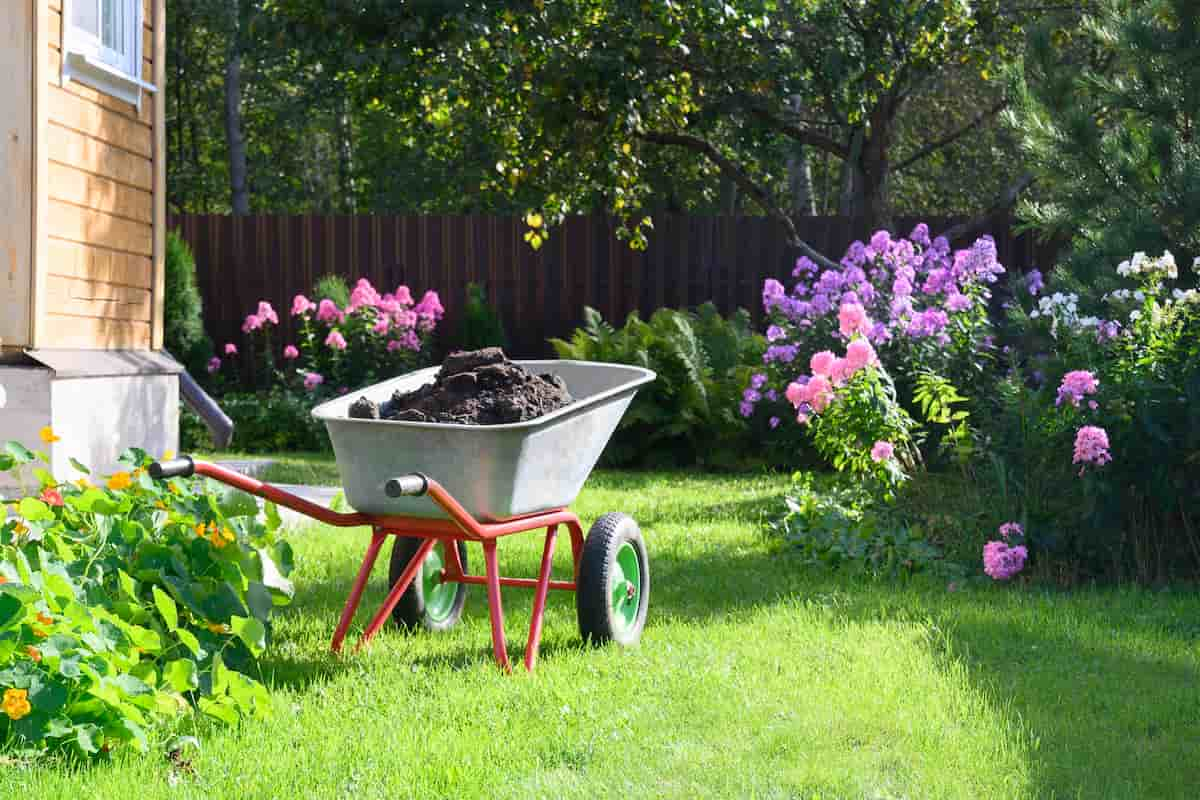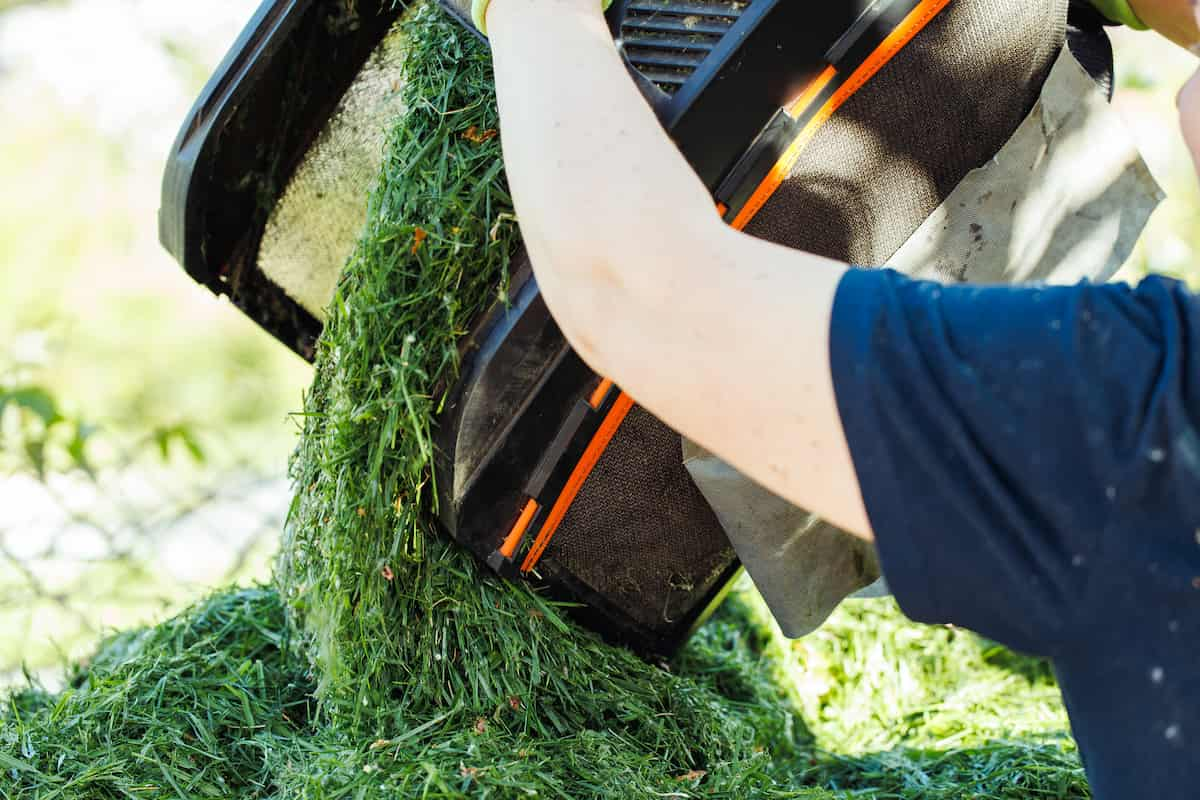Grass clippings are a great nitrogen source, making them an ideal compost pile or bin component. Composting grass clippings is one of the simplest and most effective ways to boost your garden or lawn.

How to make compost from grass clippings
Why compost grass clippings?
- The grass is a free resource that can be recycled back into the Earth, returning water and other essential nutrients to the soil and thrown into a landfill, generating more fossil fuels and damaging the environment.
- Organic matter like grass clippings decomposes quickly, releasing nutrients into the soil. This process is called composting. Composting is nature’s way of recycling organic matter, which is a great way to fertilize your plants.
- Composting grass clippings is easy and a great way to reduce your lawn waste. Grass clippings are high in nitrogen; nutrients plants need for healthy growth. When you compost grass clippings, you return important nutrients to the soil. This helps to keep your lawn healthy and green.
Are grass clippings compostable?
Yes, grass clippings are compostable. However, grass clippings should be added in small amounts and mixed with other organic materials, such as leaves and vegetable scraps. If you add too much grass at once, it will start to decompose anaerobically (without oxygen) and produce methane gas, which is harmful to the environment.
Best way to compost grass clippings
- The best way to compost grass clippings is to mow regularly and add the clippings to your compost pile little by little.
- Composted grass clippings are an excellent source of nitrogen, potassium, and phosphorus – all essential nutrients for plant growth. They can also help improve soil structure and drainage while increasing moisture retention.
- Grass clippings are an excellent nutrient source for your compost pile. When adding grass clippings to your compost, chop or mow them into small pieces, so they decompose more quickly. You can add other yard waste, such as leaves, twigs, and garden trimmings, to your compost pile. Adding a variety of materials will help create a rich, nutrient-rich compost for your plants.
Different methods to compost grass clippings
- One method is simply leaving the clippings on your lawn after mowing it. The grass will decompose and add nutrients to your soil.
- Another method is to collect the clippings in a bag or bin and then add them to your compost pile. This will speed up the decomposition process and give your plants a boost of nutrients more quickly.
- Finally, you can chop the grass clippings with a lawn mower or garden tool and mix them into the soil around your plants. This will help aerate the soil and improve drainage while adding nutrients.
In case you missed it: How to Germinate Strawberry Seeds in a Paper Towel: A Beginners Guide

How to make compost from grass clippings?
Grass clippings are a great method to add nutrients to your compost pile. Here’s how to do it;
- Start with a 3–4-inch layer of dry leaves, grass, or straw on the bottom of your compost bin.
- Add a 1 to 2 inch layer of fresh grass clippings on top of that.
- Repeat layers until you reach the top of the bin.
- Water each layer lightly as you go.
- Once the bin is full, cover it with a lid or tarp and let it sit for 2-3 weeks, occasionally stirring to aerate the compost.
- After 2-3 weeks, your compost should be ready to use! Spread it around your plants, or dig it into the soil before planting new ones.
Benefits to composting your grass clippings
- It improves the health of the soil with nutrients
- It improves aeration in the soil
- It reduces unnecessary waste that ends up in landfills
- It lowers your carbon footprint
- It reduces the need for pesticides
- It reduces the need for synthetic fertilizers
- It prevents and controls plant diseases
- It promotes the soil ecosystem
Overall, it is an easy way to better care for the environment. In addition, it is a habit that gives back, helping you eliminate your yard waste and providing free, organic fertilizer to help your plants grow strong.
Tips to make your compost grass clippings
- Assuming you have a lawn, collecting your grass clippings is the easiest way to start making your compost. First, chop or shred the grass clippings before adding them to your compost bin. This will help them break down more quickly.
- Add other organic matter to your compost bin along with the grass clippings, such as leaves, vegetable scraps, and coffee grounds. This will help create a more balanced compost.
- Keep the compost bin moist but not soggy by adding water as needed. The grass clippings will help retain moisture in the bin.
- Turn the compost regularly to aerate it and help speed up the decomposition process.
Why compost grass clippings are the best natural fertilizer for your plants?
- Grass clippings are a free resource that you can use to fertilize your plants.
- Grass clippings are packed with nitrogen, phosphorus, and potassium – all key nutrients that plants need to thrive.
- You can easily compost grass clippings at home with little effort.
- Composting grass clippings reduces waste and helps improve soil health, both great for the environment.
Best plants to use compost grass clippings
If you’re looking for a natural method to fertilize your plants, consider using composted grass clippings. The best plants to use composted grass clippings on are actively growing. This includes vegetables, fruits, flowers, and herbs.
In case you missed it: Soil pH Levels for Plants: How to Check for Vegetables, Fruits, Flowers, and Herbs

What can I mix with grass clippings for compost?
To create a nutrient-rich compost for your plants, you can mix grass clippings with other organic matter, such as leaves, twigs, and branches. The ratio of grass clippings to other organic matter should be about 3:1.
How much time does it take for grass clippings to compost?
It takes 2 to 4 weeks for grass clippings to compost fully. The key is chopping the grass into small pieces so it can break down more quickly. You can do this with a lawnmower or by hand. Once the grass is chopped, add it to your compost pile and turn it on regularly. The heat generated from the decomposing grass will help speed up the process.
Conclusion
Composting grass clippings can be a great way to provide your plants with natural nutrients. It is low-cost, 100% organic, and easy to do. Composting grass clippings also helps to improve soil quality by adding organic matter. The benefits of composting grass clippings are endless; it helps improve soil structure, retains water in the soil, reduces chemical use, and adds valuable nutrients back into the soil.
- Feed Your Flock for Less: Top 10 Tips to Save on Chicken Feed
- Ultimate Guide to Ossabaw Island Hog: Breeding, Raising, Diet, and Care
- Hatching Answers: The Top 10 Reasons Your Chickens Aren’t Laying Eggs
- Eggs and Economics: Breaking Down the Cost of Raising Backyard Chickens
- Defend Your Greens: Proven Methods to Keep Iguanas Out of Your Garden
- Ultimate Guide to Cinnamon Queen Chicken: A Comprehensive Guide for Beginners
- Ultimate Guide to California Tan Chicken: Breeding, Raising, Diet, Egg-Production and Care
- Ultimate Guide to Marsh Daisy Chicken: Breeding, Raising, Diet, and Care
- 10 Types of Chicken Farming Businesses You Can Start for Profits